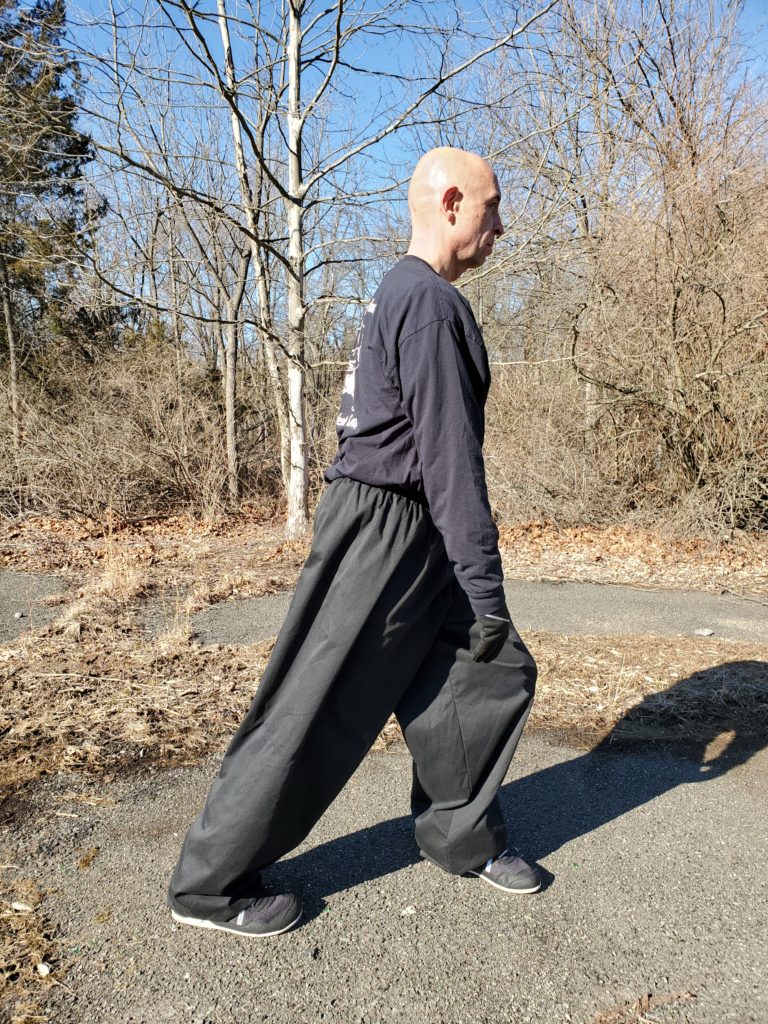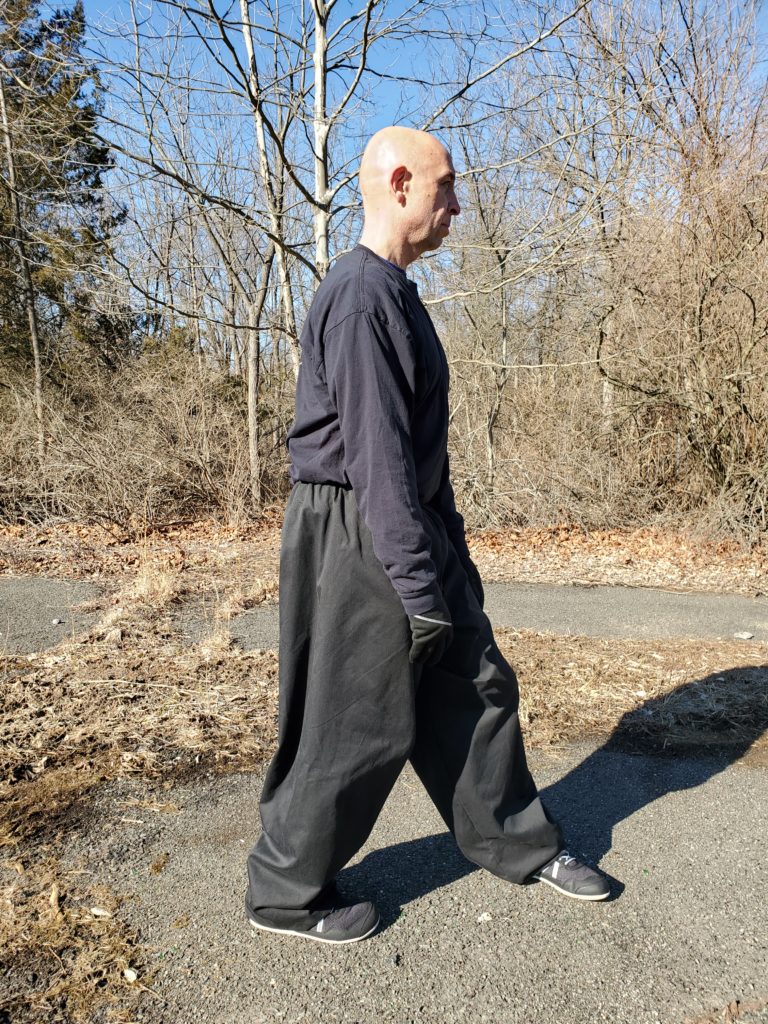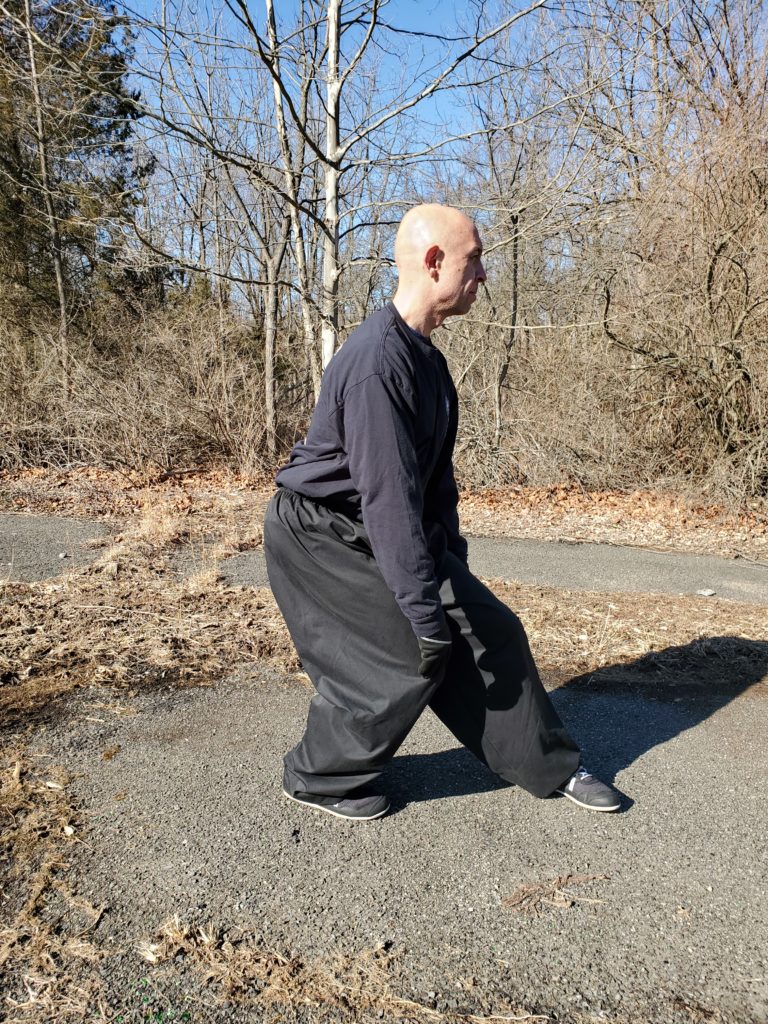By Andre Fries (定山, Ding Shan)
Many years ago, I injured an ankle during a sparring session and the result was a significant ankle sprain with associated swelling. When I was able to resume my training in Qiang Shan Ba Gua Zhang after the swelling decreased, I recall feeling as though my ankle had become “stuck” during certain stances which included Dragon Stance. That stuck feeling was accompanied by a pinching, which was explained to me by a physical therapist to be an impingement of my Peroneus Tertius muscle and the surrounding fascia (in other words, the outer area of the foot and ankle joint).
One characteristic unique to Qiang Shan Ba Gua Zhang is that it has movements and stances that use all of the body’s joints, ligaments, tendons, and muscles. I felt as though my injury prevented full use of my ankle. Over time, I was able to adjust my stance appropriately and strengthen the area; but, where I obtained the most benefit was when I began practicing the Body Wave exercise.
The Qiang Shan Ba Gua Zhang Body Wave exercise is a weight shifting movement from Dragon Stance to Climbing the Mountain Stance, and then back to Dragon Stance. It is very important in this exercise to focus on relaxing the body and allowing the shifting motion of the legs to create a wave-like movement in the spine. We call this motion “Dragon Back”. The Body Wave should naturally travel up the spine, causing the chest to expand and contract. If the spine is thought of as a whip, the handle of the whip would be the sacrum and the movement up the spine would be the flexible thong of the whip moving each segment of the vertebrae. Benefits of this movement include increased mobility of the lumbar and thoracic vertebrae, and activation and strengthening of the smaller muscles surrounding the spine. The wave (Dragon Back) travels from the sacrum through T1 (upper thoracic spine), and it is important to keep the the movements below C7 (neck region).
The movement from Climbing the Mountain Stance to Dragon Stance should be a smooth transition while maintaining a low posture. Keeping this in mind, I quickly realized that as I was shifting my weight to the back leg the painful pinching feeling increased to the point where I had to completely stop the exercise. It was then that my Shifu prescribed a temporary injury adjustment to the Body Wave exercise, based on her deeper understanding of Traditional Ba Gua and the human body. I eventually was able to keep my back foot in the correct position without any pain or pinching. If I feel any discomfort or pinching now, it serves more as a reminder to adjust my stance.
The injury adjustment that created a healing environment for my ankle and prevented the pinching and discomfort are:
- Coming up slightly in a Climbing the Mountain Stance (pic 1) and moving into a high Dragon Stance (pic 2) before sinking into a low rooted Dragon Stance (pic 3) before beginning the wave.
- I also adjusted my rear foot alignment and corrected my stance so that my hip was over my ankle instead of behind it.
This allowed me to successfully rehabilitate my ankle and strengthen the surrounding musculature, eventually becoming pain free in the stance. I am now able to transition from Climbing the Mountain Stance to Dragon Stance smoothly while maintaining a low posture, and no longer rely on the injury adjustment.
This exercise has not only changed my Dragon Stance and my root, but it also enhanced the benefits of circle walking and combat forms for me as well. I no longer feel pain or pinching in my daily activities such as walking, or going up and down stairs. I believe the Body Wave exercise may help anyone who has been experiencing chronic weakness or a ‘nagging’ injury in the areas of the foot, ankle, knee, hips, or spine. I now make the Body Wave exercise part of my daily warm up routine, and it is my hope that this information may benefit others as well.
For more detailed information regarding Qiang Shan Ba Gua Zhang please visit:
www.pa-kua.com
www.ba-gua.org
www.facebook.com/qiangshanbagua
Ba Gua should only be practiced under the watchful guidance of a qualified and experienced teacher
*Ding Shan is the lineage name of Andre Fries, an 8th generation Lineage Disciple of Orthodox Qiang Shan Ba Gua Zhang.
i) For a detailed description of the Dragon Stance, or “Dragon Posture”, please see chapter 3 of The Fundamentals of Pa Kua Chang Vol. I: The Method of Lu Shui-T’ien as Taught by Park Bok Nam, by Park Bok Nam and Dan Miller. Unique Publications, 1999.
ii) The Climbing the Mountain Stance is commonly called Deng Shan Bu (登山步) or Gong Bu (弓步) (Bow Stance).
ii) Ibid, see chapter 5.




